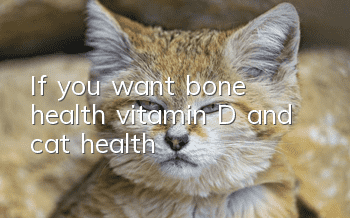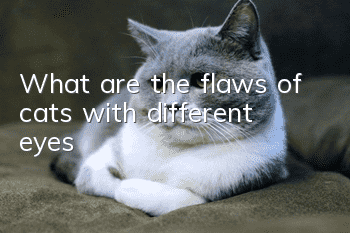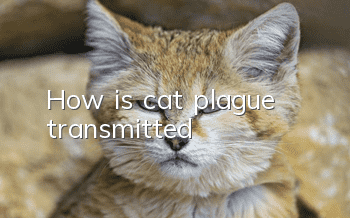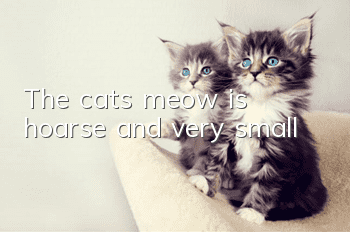If you want bone health, vitamin D and cat health!

Cats
If you want bone health, vitamin D and cat health! Vitamin D is the general name for a class of open-ring steroid compounds derived from cyclopentane polyhydrophenanthrene ring, which has anti-rickets properties nature. The main vitamin D are cholecalciferol (vitamin D3) and ergocalciferol (vitamin D2). Vitamin D3 is the product of dehydrocholesterol in animal skin after ultraviolet irradiation, collectively called calciferol.
Vitamin D is of great significance to cats. Some studies have found that among pet cats receiving hospitalization, if the level of vitamin D in their body is higher, the chance of recovery is greater. Researchers from the Royal Veterinary Research School at the University of Edinburgh have discovered this phenomenon, which could also help veterinarians provide better advice to pet owners about their pets' prognosis.
The researchers also tested blood samples from 99 critically ill pet cats that were being treated at the university's small animal hospital. After obtaining consent from their owners, the research team checked the cats' vitamin D levels. They found that cats with higher levels of vitamin D in their blood were more likely to be alive 30 days after admission than cats with the lowest levels. This could help veterinarians predict which animals are more likely to recover.
The study highlights the need to learn more about whether vitamin D plays a role in cats developing certain diseases, and what impact it may have on the consequences of illness in cats, the researchers said. Therefore, letting your cat take vitamin D scientifically can give it an extra life.
1. Clinical symptoms of vitamin D deficiency in cats
Young pets will have symptoms of rickets. The initial manifestations are heterophilia, digestive disorders, a tendency to lie down, and lameness. , slow growth and development, cartilage hypertrophy, swelling of limb joints, bending of limbs when standing, and in severe cases, an "X" or "O" posture when standing; bone hardness is significantly reduced, fragility is increased, and fractures are easy; serum alkaline phosphatase activity increases High, blood calcium and blood phosphorus levels are reduced. Adult pets show osteomalacia, osteoporosis, etc. In the early stage of the disease, digestive disorders, mainly heterophilia, appear, followed by movement disorders, stiffness of the waist and legs, lameness of one or several limbs, or alternating lameness of each limb, and often lying on the ground and unwilling to stand up. Subsequently, the bones will be swollen and deformed, the limbs will be swollen and painful, and the junction between the ribs and costal cartilage will be swollen, making it easy to fracture. There was no significant change in the serum calcium content, the serum phosphorus content was significantly reduced, and the serum alkaline phosphatase level was significantly increased.
2. Causes of vitamin D deficiency in cats
Long-term insufficient sunlight exposure can cause vitamin D deficiency; young pets are in the weaning stage and early sexual maturity. , rapid growth and development, and significant increase in calcium and phosphorus deposition; adult pets are prone to losing a large amount of calcium and phosphorus during late pregnancy and lactation. These factors can increase the body's demand for vitamin D. If the supply is insufficient, it can easily lead to deficiency; Intestinal disease affects the absorption of vitamin D, and liver disease affects the absorption of vitamin D.Transformation and storage in the liver, kidney disease can affect vitamin D hydroxylation. In addition, strontium and cymbal in feed can interfere with the utilization of vitamin D. Excessive vitamin A content can also hinder the body's utilization of vitamin D, causing relative deficiency.
3. Treatment of vitamin D deficiency
Vitamin D deficiency often reduces the body’s absorption and storage of calcium, and due to the slow development of the disease, it will be difficult to treat When typical symptoms occur, the cat not only lacks vitamin D, but its bones also become loose due to a serious lack of calcium. Therefore, a two-pronged approach of vitamin D and calcium supplementation is usually used to treat vitamin D deficiency. In the early stage, you can use 5 to 10 mL of cod liver oil and 2 to 3 g of calcium every day. After continuous use for 5 to 6 days, stop using cod liver oil for 2 to 3 days, and then continue to use it until it recovers: If the affected cat has severe bone deformation, you need to First, intramuscularly inject 100,000 to 200,000 IU of vitamin D3, and intravenously inject 2 to 3 g of calcium chloride or calcium gluconate, and then continue treatment using the above methods. During the treatment process, the cat's feeding and digestion status should be closely observed. If digestive disorders occur, stomachic agents should be used as appropriate.
4. Pets’ requirements for vitamin D, poisoning symptoms and treatment
The minimum requirement for vitamin D during the growth period of pet cats is The dry matter content of the diet is 750 IU per kilogram, while the minimum value for the adult maintenance period is 500 IU per kilogram of dry matter and the maximum value is 10,000 IU.
Long-term supply of feed with vitamin D content exceeding normal requirements or long-term feeding of animal liver or cod liver oil to pets may lead to vitamin D poisoning. The main clinical manifestations of poisoning are anorexia, diarrhea, elevated serum calcium concentration, normal or slightly elevated serum phosphorus concentration, and bone decalcification; long-term high calcium can also cause multiple peripheral calcifications, such as kidney stones and osteoporosis. wait. After poisoning is discovered, the diet structure should be adjusted immediately. In addition to symptomatic treatment, prednisolone injection, furosemide or calcitonin can also be injected subcutaneously.
- Training your cat to sharpen its claws can relax you and calm your mood!
- Ragdoll cats are beautiful, but these three shortcomings cannot be ignored. Novices must not keep them.
- How to get rid of fleas on kittens?
- How old can a cat take hair removal cream? How often should cats use hair removal cream?
- Signs that a female cat doesn’t want to take care of her babies
- What vegetables do cats eat?
- What should you pay attention to when raising Burmese cats?
- What should I do if a hard lump bulges in the wound of a female cat after being neutered?
- Cat Injury Treatment First Aid Care Instructions
- Can cats eat cat food soaked in boiling water?



